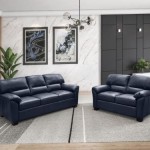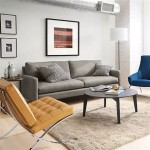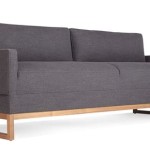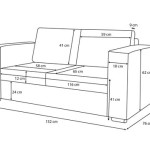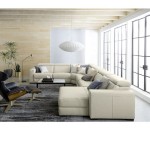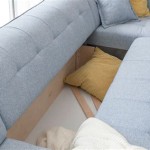3 and 2 Seater Sofa Packages at DFS: A Guide to Japanese-Inspired Comfort
The selection of furniture significantly impacts the ambiance and functionality of a living space. Among the various options available, 3 and 2 seater sofa packages offer a balanced combination of seating capacity and space optimization. DFS, a well-known furniture retailer, presents a range of such packages, with some subtly influenced by Japanese design principles. This article explores the characteristics of 3 and 2 seater sofa packages at DFS, with a particular focus on how elements of Japanese aesthetics can be integrated into these offerings, creating a comfortable and aesthetically pleasing living environment.
While DFS doesn't explicitly market sofas as "Japanese style," certain models and design features resonate with the core tenets of Japanese interior design. These include minimalism, natural materials, clean lines, and a focus on functionality. By carefully selecting a 3 and 2 seater sofa package from DFS, individuals can create a living space that subtly reflects these Japanese-inspired design elements.
Understanding Key Japanese Design Principles
Before examining specific DFS sofa options, it's crucial to understand the fundamental principles of Japanese interior design. These principles guide the selection of furniture and accessories, creating a harmonious and tranquil living environment. These principles are interwoven and contribute to a cohesive aesthetic.
Minimalism and Simplicity: Japanese design often emphasizes minimalism, stripping away unnecessary ornamentation and focusing on essential elements. This translates to clean lines, uncluttered surfaces, and a sense of spaciousness. Furniture is chosen for its functionality and purpose, avoiding excessive decoration.
Natural Materials: The use of natural materials is central to Japanese design. Wood, bamboo, paper, and natural fabrics are frequently incorporated, bringing a sense of warmth and connection to nature. These materials contribute to a calming and organic atmosphere.
Clean Lines and Geometric Shapes: Clean, straight lines and simple geometric shapes are characteristic of Japanese design. This creates a sense of order and harmony, avoiding overly complex or ornate details. Furniture often features simple, angular designs that complement the overall aesthetic.
Functionality and Practicality: Japanese design prioritizes functionality and practicality. Furniture is chosen for its usefulness and ability to serve a specific purpose. This emphasis on practicality ensures that every element in the space contributes to the overall comfort and efficiency of the living environment.
Connection to Nature: Bringing elements of nature indoors is a key aspect of Japanese design. This can be achieved through the use of natural materials, indoor plants, or views of the outdoors. This connection to nature promotes a sense of tranquility and well-being.
Identifying Japanese-Inspired Elements in DFS Sofa Packages
While DFS offers a wide variety of sofa styles, some packages lend themselves more readily to incorporating Japanese-inspired design elements. Focusing on specific characteristics can help individuals select a package that aligns with this aesthetic.
Low-Profile Designs: Japanese interiors often feature low-profile furniture, creating a sense of groundedness and connection to the floor. Sofas with low seat heights and minimal legs can evoke this feeling. DFS offers several sofa packages with lower profiles that can contribute to a Japanese-inspired aesthetic.
Neutral Color Palettes: Japanese design typically utilizes a neutral color palette, featuring tones of white, beige, gray, and brown. These colors create a calming and serene atmosphere. Selecting a sofa package in a neutral color can provide a foundation for building a Japanese-inspired living space. Consider fabrics like linen or cotton in these natural hues.
Simple Upholstery and Minimal Detailing: Sofas with simple upholstery and minimal detailing are more aligned with the minimalist principles of Japanese design. Avoid sofas with excessive ornamentation, tufting, or complex patterns. Opt for clean, unadorned fabrics that emphasize the simplicity of the design. Straight, clean seams and minimal buttoning will enhance the minimalist look.
Wood Accents: If the sofa package includes exposed legs or a wooden frame, consider models with light-colored wood, such as birch or ash. These woods are commonly used in Japanese furniture and contribute to a natural and organic feel. The exposed wood should have a smooth, clean finish, avoiding ornate carvings or embellishments.
Modular Designs: While not exclusively Japanese, modular sofa designs offer flexibility and adaptability, which aligns with the functional aspect of Japanese interiors. These sofas can be rearranged to suit different needs and spaces, allowing for a customized layout that maximizes space and functionality.
Integrating Japanese-Inspired Styling with a DFS Sofa Package
Selecting a suitable 3 and 2 seater sofa package from DFS is just the first step. To fully achieve a Japanese-inspired living space, it's essential to incorporate complementary styling elements that reinforce the desired aesthetic. These elements work together to create a cohesive and harmonious environment.
Low Coffee Table and Side Tables: A low coffee table is a staple of Japanese-inspired living rooms. Choose a coffee table made of natural wood with a simple, minimalist design. Similarly, opt for low side tables with clean lines. The height of these tables should be below the seat height of the sofas for a more authentic feel.
Natural Fiber Rugs: Incorporate a natural fiber rug, such as jute or sisal, to add texture and warmth to the space. These rugs complement the natural materials used in Japanese design and provide a comfortable underfoot experience. Choose a rug with a neutral color and a simple pattern, avoiding overly elaborate designs.
Minimal Accessories: Japanese interiors are characterized by a minimal approach to accessories. Avoid clutter and focus on a few carefully chosen items that have personal significance. Consider incorporating a single piece of artwork, a simple vase with a few stems, or a carefully selected collection of books.
Indoor Plants: Incorporate indoor plants to bring a touch of nature into the living space. Bonsai trees, bamboo plants, and orchids are popular choices for Japanese-inspired interiors. Place the plants strategically to create a sense of tranquility and connection to the outdoors.
Shoji Screens or Blinds: If possible, consider incorporating shoji screens or blinds to filter natural light and create a soft, diffused glow. These screens are a classic element of Japanese design and provide a sense of privacy and tranquility. If shoji screens are not practical, consider using light-filtering curtains or blinds in a neutral color.
Tatami Mats: While not always practical for a full room, integrating tatami mats as a focal point or accent can enhance the Japanese aesthetic. A small tatami mat can be used as a platform for a low table or a decorative element beneath a plant.
Lighting: Soft, ambient lighting is crucial for creating a relaxing atmosphere. Use lamps with paper shades or dimmable lights to create a warm and inviting glow. Avoid harsh overhead lighting and focus on creating pools of light throughout the space.
Storage Solutions: Maintain a clutter-free environment by utilizing storage solutions that blend seamlessly with the overall design. Built-in shelves, storage ottomans, or simple wooden cabinets can help keep the space organized and uncluttered.
Focus on Empty Space (Ma): The concept of "ma," or empty space, is central to Japanese design. Avoid filling every corner of the room and allow for areas of open space. This creates a sense of balance and tranquility, allowing the eye to rest and the mind to relax.
The selection of a 3 and 2 seater sofa package from DFS that aligns with Japanese-inspired design principles requires careful consideration of key elements such as low profiles, neutral color palettes, simple upholstery, and natural materials. By combining these elements with complementary styling choices, individuals can create a living space that is both comfortable and aesthetically pleasing, reflecting the serenity and simplicity of Japanese design.

Japan Sofa Two House Of Finn Juhl

Japan 3 Seater Sofa

Japan Sofa Three House Of Finn Juhl

Hallingdal 65 113 103 Walnut Sofa Only

House Of Finn Juhl Japan 3 Seater Sofa 2modern

Japan Sofa Two House Of Finn Juhl

Japan Sofa Two House Of Finn Juhl

House Of Finn Juhl Japan 3 Seater Sofa 2modern

Japan Sofa Three House Of Finn Juhl

House Of Finn Juhl Japan 3 Seater Sofa 2modern



